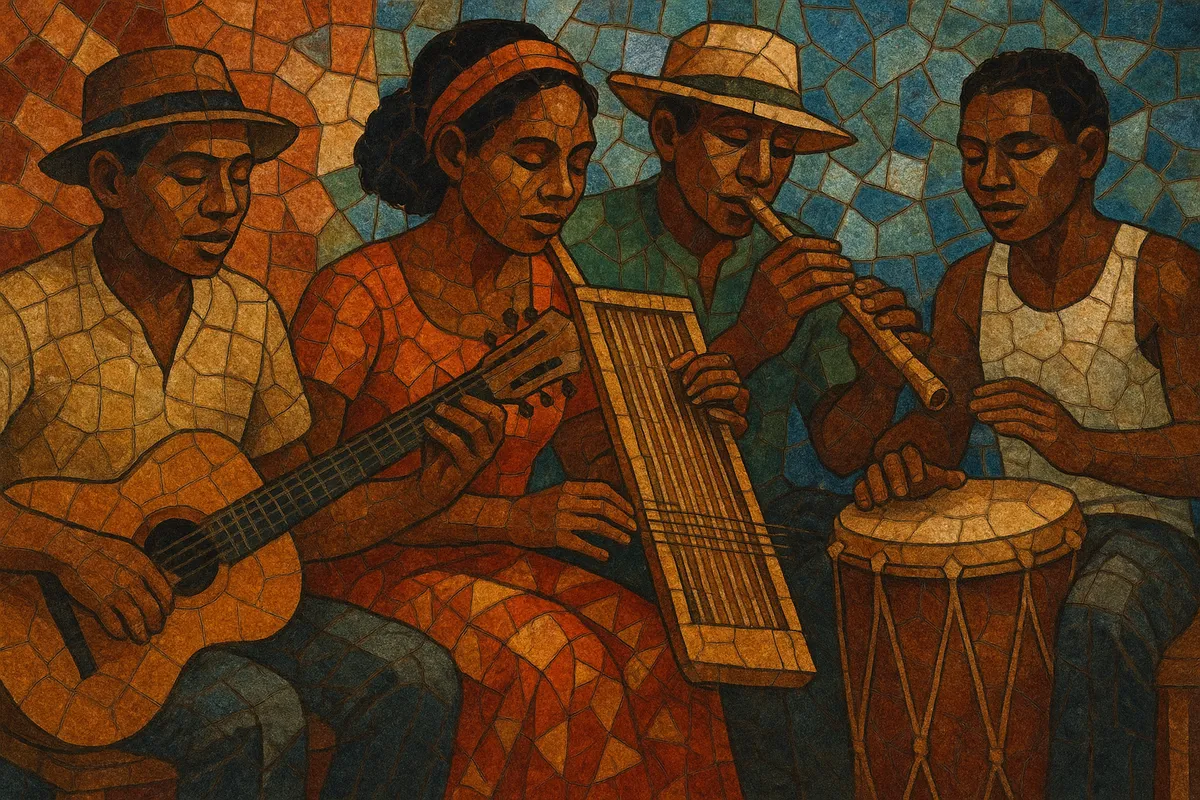
Malagasy music refers to the extraordinarily diverse musical traditions of Madagascar, shaped by the island’s unique position between Africa and the Austronesian world. Its sound blends Indonesian-derived zithers and tunings with African polyrhythms, call-and-response vocals, and, later, European harmony and song forms.
Core instruments include the valiha (bamboo tube zither), marovany (box zither), kabosy (box guitar-lute), lokanga (fiddle), sodina (end-blown flute), and a range of drums such as the hazolahy. In the 20th century, guitar, accordion, and electric bands became common, powering high-energy dance styles like salegy and tsapiky alongside older courtly and theatrical traditions such as hiragasy.
Across regions, styles vary widely: Merina highland repertoires favor intricate zithers and multipart singing; the northwest and coastal cities champion fast, rolling 6/8 grooves; the southwest features trance-like guitar ostinatos and communal choruses. The result is a living continuum that moves from intimate, harp-like textures to exuberant, electrified dance music.
Malagasy musical identity coalesced as the Merina and other kingdoms fostered courtly arts, codifying the use of the valiha, marovany, and multipart vocal textures. These practices, likely rooted in earlier Austronesian migrations, encountered African polyrhythms via trade and migration along the Indian Ocean. Religious and ceremonial repertoires took shape alongside open-air theatrical forms that would later be called hiragasy.
French colonial presence introduced European harmony, military band instruments, and chanson-like songcraft. Accordions and guitars entered popular ensembles, and hymnody influenced voice-leading. Urban centers such as Antananarivo and coastal ports became hubs where rural forms met new technologies and cosmopolitan tastes.
Radio, recording, and electric instruments catalyzed modern Malagasy pop. Coastal regions developed high-tempo, 6/8-driven styles—most famously salegy in the northwest and tsapiky in the southwest—inflected by Congolese soukous guitar lines and Indian Ocean ballroom energies. Meanwhile, highland music embraced guitar fingerstyle and refined zither traditions, and popular troupes sustained hiragasy as a community spectacle.
Artists such as Jaojoby, Tarika, D’Gary, Rajery, and Justin Vali brought Malagasy sounds to global stages, feeding into worldbeat and world-fusion currents. Contemporary bands freely combine kabosy, valiha, and marovany with drum kits, synths, and electric guitars, while community and ritual contexts continue to sustain traditional singing and dance. Today, Malagasy music bridges intimate acoustic performance and stadium-scale dance energy, remaining one of the Indian Ocean’s most distinctive musical traditions.

